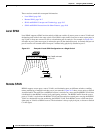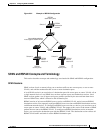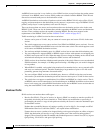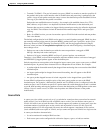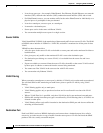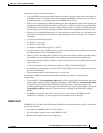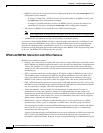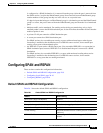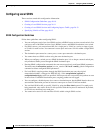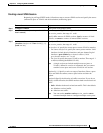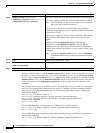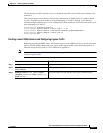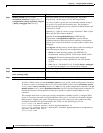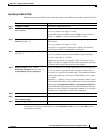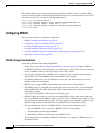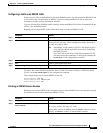
26-10
Cisco ME 3400 Ethernet Access Switch Software Configuration Guide
OL-9639-06
Chapter 26 Configuring SPAN and RSPAN
Configuring SPAN and RSPAN
Configuring Local SPAN
These sections contain this configuration information:
• SPAN Configuration Guidelines, page 26-10
• Creating a Local SPAN Session, page 26-11
• Creating a Local SPAN Session and Configuring Ingress Traffic, page 26-13
• Specifying VLANs to Filter, page 26-15
SPAN Configuration Guidelines
Follow these guidelines when configuring SPAN:
• You can configure a total of two local SPAN sessions or RSPAN source sessions on each switch. You
can have a total of 66 SPAN sessions (local, RSPAN source, and RSPAN destination) on a switch.
• For SPAN sources, you can monitor traffic for a single port or VLAN or a series or range of ports
or VLANs for each session. You cannot mix source ports and source VLANs within a single SPAN
session.
• The destination port cannot be a source port; a source port cannot be a destination port.
• You cannot have two SPAN sessions using the same destination port.
• When you configure a switch port as a SPAN destination port, it is no longer a normal switch port;
only monitored traffic passes through the SPAN destination port.
• Entering SPAN configuration commands does not remove previously configured SPAN parameters.
You must enter the no monitor session {session_number | all | local | remote} global configuration
command to delete configured SPAN parameters.
• For local SPAN, outgoing packets through the SPAN destination port carry the original
encapsulation headers—untagged or IEEE 802.1Q—if the encapsulation replicate or
encapsulation dot1q keywords are specified. If the keywords are not specified, the packets are sent
in native form. For RSPAN destination ports, outgoing packets are not tagged.
• You can configure a disabled port to be a source or destination port, but the SPAN function does not
start until the destination port and at least one source port or source VLAN are enabled.
• You can limit SPAN traffic to specific VLANs by using the filter vlan keyword. If a trunk port is
being monitored, only traffic on the VLANs specified with this keyword is monitored. By default,
all VLANs are monitored on a trunk port.
• You cannot mix source VLANs and filter VLANs within a single SPAN session.



